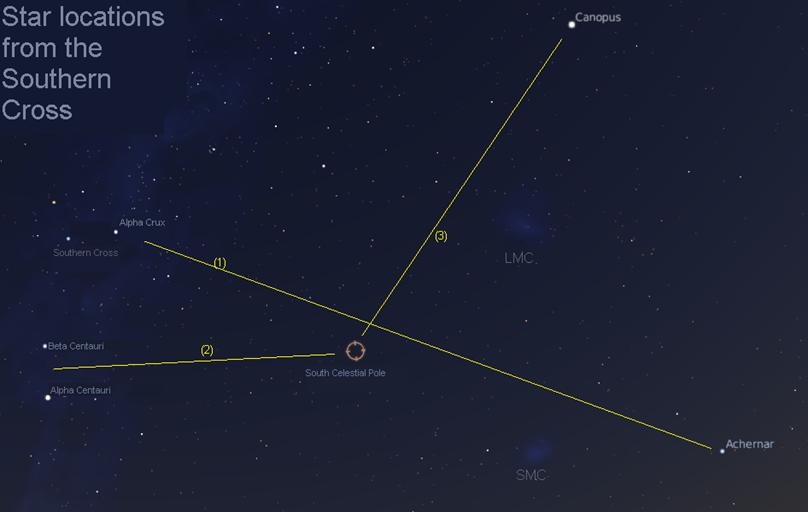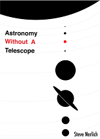Star map from Southern Cross

Finding stars around the Southern Cross (or go back to Name that Star)
The stars labeled here are very bright—and amongst the first to be seen at dusk. It may be easier to orientate yourself to these by hunting for them at dusk rather than later in the night when dimmer stars start crowding out the sky. They are generally bright enough to be seen in cities with moderate light pollution.
The Southern Cross should be easy to find and never really sets—although in (the southern hemisphere’s) summer, it can be right down on the horizon. It always overlies the Milky Way (seen in the diagram as a light blue hazy ribbon running up the left edge) and is accompanied by the two bright starts sometimes called the Pointers .
The stars of the Southern Cross are named Alpha to Epsilon Crux (proceeding anticlockwise from Alpha Crux labeled in the diagram). Crux is the formal name of the constellation.
The Pointers below are Alpha and Beta Centauri (as you might guess, part of the Centauri constellation). Alpha is the interesting one being the closest star to our solar system (4.3 light years).
Following a line (1) through the long axis of the Southern Cross, you pass close to the South Celestial Pole (about where another line (2) from the middle of the pointers would intersect). Keep that same line going right across the sky and you get to Achernar. The faint smudge above the line is the Large Magellenic Cloud (LMC), the other smudge below it is the Small Magellenic Cloud (SMC). However, you will only see these in very good conditions with low light pollution.
You can draw another line (3) out from the South Celestial Pole, which will pass through Canopus (2nd brightest star in sky) and then Sirius (1st brightest star, though not shown here). This line is continued on the map Stars around Orion’s Belt.




